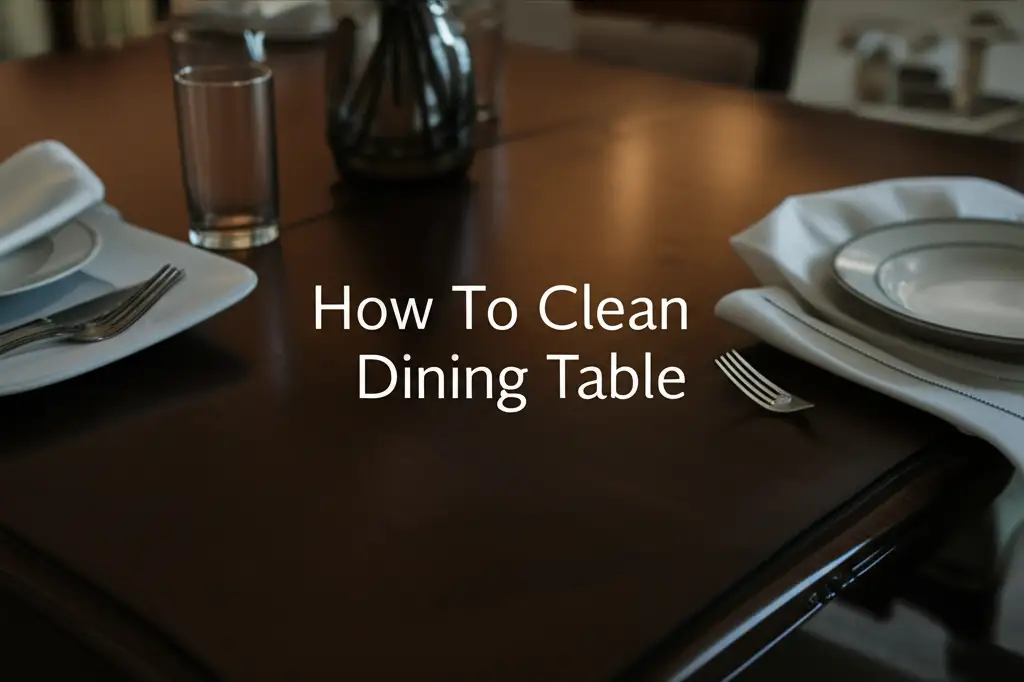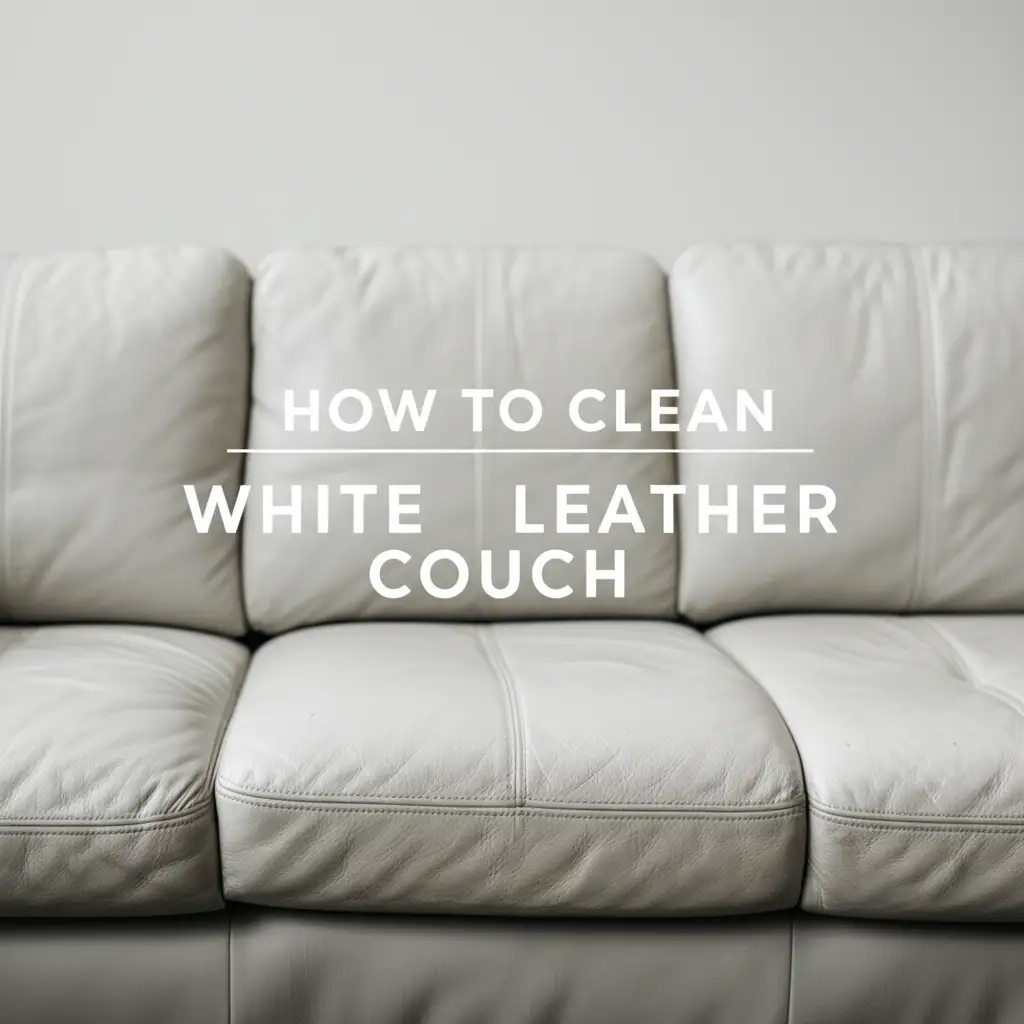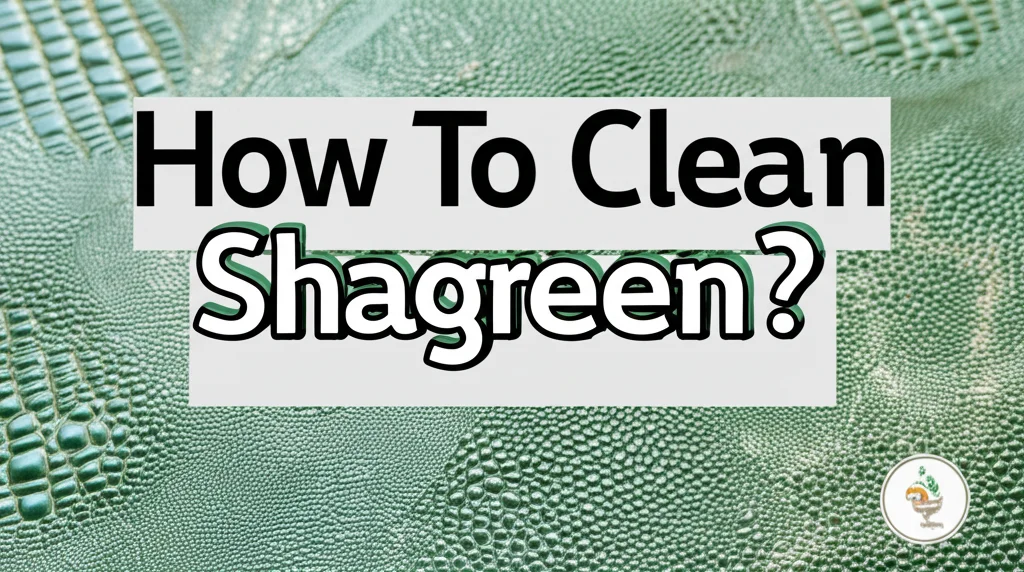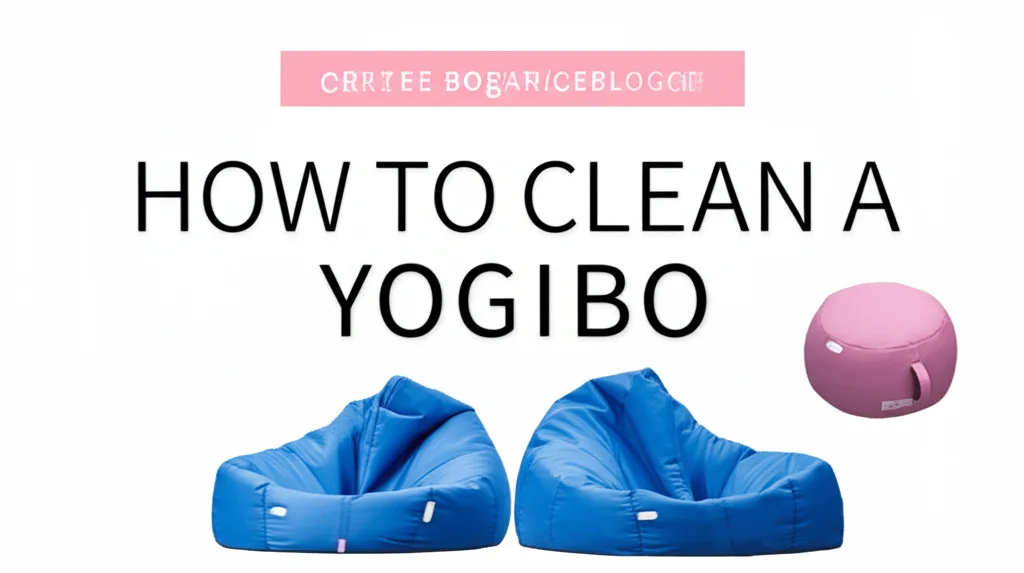· Home Cleaning · 18 min read
How To Clean Poison Ivy Off Furniture
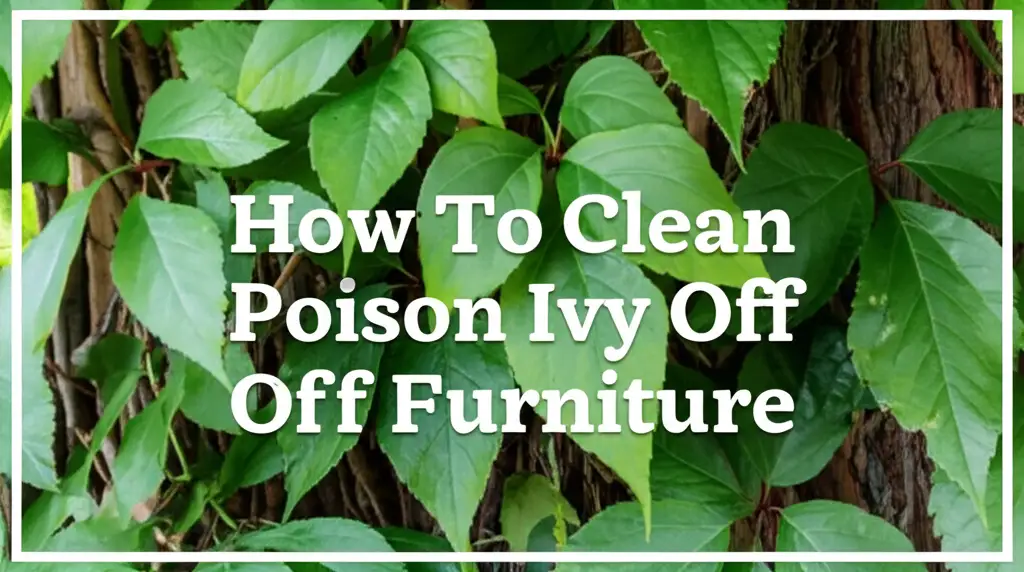
Safely Clean Poison Ivy Off Furniture
Discovering poison ivy on your furniture can cause alarm. That familiar three-leaf plant holds a potent secret: an oily resin called urushiol. This oil causes the itchy, blistering rash many people know. Cleaning poison ivy off furniture requires care and the right methods. You want to remove all traces of this irritating oil. This guide shows you how to effectively clean poison ivy from various furniture types. We cover everything from essential safety precautions to specific cleaning techniques, ensuring your home is safe and rash-free.
Takeaway
- Identify urushiol contamination on furniture immediately.
- Wear complete personal protective equipment (PPE) before you start.
- Use oil-dissolving agents like dish soap or rubbing alcohol for effective urushiol removal.
- Apply specific cleaning methods based on furniture material (wood, fabric, plastic, metal).
- Thoroughly clean all tools and dispose of contaminated materials safely.
To effectively clean poison ivy off furniture, wear protective gear, including gloves and long sleeves. Use a strong degreasing agent like dish soap or rubbing alcohol. Apply the cleaner, scrub the surface, and rinse thoroughly to remove the oily urushiol resin that causes the rash.
Understanding Urushiol and Its Risks
Poison ivy holds an unwelcome surprise for many: urushiol. This invisible, sticky oil causes the infamous rash. Contact with urushiol is what leads to itching and blisters. Even a small amount can trigger a reaction on skin.
The Potent Nature of Urushiol
Urushiol is an oily resin found in poison ivy, oak, and sumac plants. It quickly binds to surfaces, including furniture. This oil can remain active for years, especially in dry conditions. You do not need direct plant contact to get a rash. Touching contaminated furniture can easily transfer the oil to your skin.
Removing urushiol is critical for safety. Standard water alone does not break it down. You need a cleaning agent that dissolves oils. Ignoring contaminated furniture means continuous risk of exposure. We prioritize your well-being throughout this cleaning process.
Common Contamination Scenarios
Furniture often picks up urushiol during outdoor activities. Garden tools or clothing can carry the oil indoors. Children and pets might brush against plants and then touch furniture. Outdoor furniture, like patio chairs, is especially vulnerable to direct contact.
Even if you do not see plant material, the oil can be present. A simple brush against a plant can leave enough oil to cause trouble. Remember to check areas where outdoor items are placed. Prevention is always better, but cleaning is the next best step. Always assume contact unless you are sure.
Essential Safety Preparations Before Cleaning
Cleaning poison ivy off furniture demands careful preparation. You must protect yourself from urushiol. Direct contact with the oil causes an allergic reaction. This preparation phase is not optional. It ensures your safety and prevents the spread of the oil.
Personal Protective Equipment (PPE) is Paramount
Wearing the right gear is your first line of defense. Always assume the furniture has active urushiol on it. Choose items that cover all exposed skin. This barrier stops the oil from touching you.
- Gloves: Use heavy-duty, disposable gloves, like nitrile or rubber. Latex gloves may not offer enough protection. Double gloving provides an extra layer of safety.
- Long Sleeves and Pants: Wear clothing that covers your arms and legs completely. Choose old clothes you can immediately wash afterward. A disposable painter’s suit offers excellent protection.
- Eye Protection: Safety glasses or goggles protect your eyes. Urushiol can irritate sensitive eye tissue.
- Mask: A simple dust mask can prevent accidental inhalation of particles. While urushiol is an oil, plant dust can carry traces.
- Footwear: Wear closed-toe shoes or boots. Consider shoe covers for extra protection.
Remove PPE carefully after cleaning. Peel gloves inside out. Avoid touching the contaminated outer surfaces. This step prevents secondary exposure.
Preparing the Cleaning Area
Set up your cleaning space to contain the urushiol. This prevents cross-contamination. Work in a well-ventilated area. If possible, move the contaminated furniture outdoors.
- Clear the Area: Remove any items not being cleaned. This protects them from accidental urushiol transfer.
- Lay Down Protection: Use old newspapers, cardboard, or plastic sheeting. Place this material under the furniture. This catches drips and prevents oil from touching the floor. Dispose of these materials properly after use.
- Ventilation: Open windows or work outdoors. Good airflow helps disperse any fumes from cleaning agents.
- Keep Pets Away: Ensure pets cannot access the cleaning area. They can easily spread urushiol throughout your home. Their fur holds the oil and transfers it to you.
Having a clear plan and the right setup makes the cleaning process safer. It also makes cleanup easier. Remember, caution prevents a rash.
Identifying Furniture Types and Cleaning Approaches
Different furniture materials require specific cleaning methods. Urushiol behaves differently on various surfaces. A one-size-fits-all approach is not effective. Knowing your furniture’s material is the first step.
Wood Furniture and Hard Surfaces
Wood, metal, plastic, and sealed stone are hard surfaces. Urushiol tends to sit on top of these materials. This makes it easier to clean. However, the oil can seep into porous wood. This means you need a thorough cleaning.
For wood, avoid harsh abrasives that can damage the finish. Use degreasing agents to lift the oil. Follow with a gentle wipe. For sealed surfaces, stronger cleaners may be fine. Always test a small, hidden area first. This prevents damage to the furniture’s finish. Cleaning wood furniture from substances like mold often uses specific methods that can be adapted for urushiol if it’s deeply ingrained. For guidance on general wood furniture care, you can read more about how to clean mold off of wood furniture. Another useful article regarding similar problems with wood furniture can be found at how to clean mildew off antique wood furniture.
Fabric and Upholstered Furniture
Fabrics pose a greater challenge. Urushiol can soak deep into fibers. This makes complete removal difficult. You cannot simply wipe it away. Heat can also set the oil, making it harder to remove.
For upholstered items, spot cleaning is often needed. Machine washing removable covers is best. Use hot water and a strong detergent. Multiple washes might be necessary. Delicate fabrics may require professional cleaning. Be aware that some cleaning agents like vinegar and baking soda are great for general cleaning around the house. Learn more about effective cleaning methods using how to clean with vinegar and baking soda.
Material-Specific Considerations
- Unfinished Wood: Urushiol can penetrate deeply. You might need repeated cleanings. Sanding might be a last resort for severe cases.
- Leather: Use a mild soap and water solution. Follow with a leather conditioner. Avoid harsh chemicals that dry out the leather.
- Metal/Plastic: These are the easiest. A strong degreaser works well. Wipe and rinse thoroughly.
- Rugs/Carpets: Similar to fabric. Use a carpet cleaner with degreasing properties. Consider professional steam cleaning.
Carefully assess your furniture. Match the cleaning method to the material. This ensures effectiveness and prevents damage. A little thought goes a long way.
Cleaning Fabric Furniture Contaminated with Urushiol
Fabric furniture presents a unique challenge for urushiol removal. The oily resin can penetrate deep into the fibers. This makes it crucial to use proper techniques. My goal is to help you thoroughly clean these items.
Spot Cleaning Upholstery
You cannot throw a large sofa into a washing machine. Spot cleaning is the best approach for fixed upholstery. This method targets only the affected areas. Act quickly when you notice contamination.
- Prepare a Cleaning Solution: Mix a generous amount of strong degreasing dish soap with warm water. Alternatively, use rubbing alcohol (isopropyl alcohol). Urushiol is an oil, and dish soap breaks down oils effectively. Alcohol dissolves the oil too.
- Test in an Inconspicuous Area: Apply a small amount of the solution to a hidden spot. Check for colorfastness or damage. This step prevents ruining your furniture.
- Blot the Contaminated Area: Dampen a clean, white cloth with your cleaning solution. Gently blot the area where you suspect urushiol. Do not rub vigorously; this can spread the oil.
- Work from Outside In: Start blotting from the edge of the contaminated spot. Move towards the center. This helps contain the oil.
- Rinse and Repeat: Use a new, clean cloth dampened with plain water to blot away soap residue. Repeat the cleaning and rinsing steps several times. Continue until you believe all urushiol is gone. The cloth should come away clean.
- Air Dry: Allow the treated area to air dry completely. Do not use heat, as it can set residual urushiol. Place a fan nearby to speed drying.
Machine Washing Removable Covers
If your fabric furniture has removable covers, machine washing is the most effective method. This allows for a more comprehensive cleaning. Always check the care tag first for specific washing instructions.
- Remove Covers Carefully: Wear your PPE when handling the covers. The oil is still present. Try not to touch the interior of the covers.
- Pre-Treat (Optional but Recommended): Spray affected areas with rubbing alcohol or a strong degreasing pre-treatment. Let it sit for a few minutes.
- Wash with Hot Water and Detergent: Use the hottest water setting suitable for the fabric. Add a heavy-duty laundry detergent. Consider adding a cup of borax or a similar laundry booster for extra cleaning power. Detergents specifically formulated for outdoor gear or pet odors sometimes work well.
- Run Multiple Cycles: For stubborn contamination, run the covers through two wash cycles. This ensures maximum urushiol removal. You can also re-wash using a commercial cleaner designed for poison ivy.
- Dry Properly: Air dry the covers if possible. If using a dryer, use a low heat setting. High heat can potentially set any remaining urushiol. Ensure covers are completely dry before putting them back on.
Remember, thoroughness is key with fabric. Urushiol is persistent. Be patient and repeat steps if necessary. Your comfort and health are worth the effort.
Tackling Urushiol on Wood and Hard Surfaces
Hard surfaces like wood, plastic, metal, and glass can also harbor urushiol. Unlike fabrics, the oil often sits on the surface. This makes it generally easier to remove. However, you must still use proper cleaning agents and techniques. My approach ensures safe and effective removal.
Cleaning Wood Furniture
Wood furniture requires a balance of effectiveness and care. You want to remove the urushiol without damaging the wood finish. Always test your cleaning solution in a hidden spot first.
- Wipe Down with Mineral Spirits or Rubbing Alcohol: For sealed wood, dampen a clean cloth with mineral spirits or rubbing alcohol (isopropyl alcohol). Mineral spirits are excellent for dissolving oils. Alcohol also works well as a solvent. Gently wipe the entire surface. This first pass helps lift the oily urushiol.
- Wash with Dish Soap Solution: Next, mix a strong solution of warm water and a generous amount of degreasing dish soap. Dish soap excels at breaking down oils. Dip a clean cloth or soft sponge into the soapy water.
- Scrub Gently: Lightly scrub the wood surface in the direction of the grain. Focus on areas where contact was likely. Do not over-saturate the wood.
- Rinse Thoroughly: Use a separate clean cloth dampened with plain water. Wipe down the wood to remove all soap residue. Change the rinse water often. Ensure no soapy film remains.
- Dry Immediately: Dry the wood furniture immediately with a clean, dry cloth. Do not let water sit on the wood, as it can cause damage. For comprehensive advice on preserving wood furniture, you might find information on cleaning mold off wood useful, as similar principles of gentle cleaning and drying apply. For guidance on maintaining your wooden items, consider reading more about how to clean black mold off wood. You may also find it useful to learn about general cleaning techniques for wood surfaces, such as how to clean wood floors with vinegar.
For unfinished or severely contaminated wood, you may need to repeat these steps multiple times. For antique or delicate wood, consider professional cleaning services.
Cleaning Metal, Plastic, and Glass Furniture
These non-porous surfaces are the easiest to clean. Urushiol cannot penetrate them. This simplifies the cleaning process significantly.
- Prepare a Strong Degreasing Solution: Mix warm water with a generous amount of dish soap. You can also use rubbing alcohol or a commercial degreaser.
- Wipe Down the Surface: Dip a clean cloth or sponge into your chosen cleaning solution. Thoroughly wipe down all contaminated surfaces. Apply firm pressure to ensure oil removal.
- Scrub if Necessary: For textured plastic or intricate metalwork, use a soft brush. This helps reach into crevices.
- Rinse Completely: Use a fresh cloth dampened with clean water to wipe away all cleaning solution. Ensure no residue remains. Repeat rinsing as needed.
- Dry Thoroughly: Dry the furniture completely with a clean, dry cloth. This prevents water spots and ensures no oil is left behind.
Always remember safety. Wear your PPE throughout the entire cleaning process. Dispose of all contaminated cloths and materials properly. Your diligence ensures a rash-free environment.
Post-Cleaning Steps and Preventing Recontamination
You have successfully cleaned your furniture. Now, you need to ensure no urushiol remains on your tools or person. This final phase is crucial for preventing recontamination. It also helps you stay rash-free.
Cleaning Yourself and Your Tools
The cleaning process itself can expose you to urushiol. Always assume you have come into contact with it. Thoroughly clean your hands, skin, and tools immediately. This stops the spread of the oil.
- Skin: Wash any exposed skin with a specialized urushiol-removing soap (like Tecnu or Zanfel). If you do not have these, use a strong degreasing dish soap. Lather well and rinse thoroughly. Repeat this process two to three times. Wash your entire body with regular soap and water in a shower. Take care not to spread the oil further.
- Gloves and PPE: Carefully remove your disposable gloves, turning them inside out. Dispose of them immediately. For reusable gloves or other protective gear, wash them thoroughly with soap and water before storing. You can use dish soap for this.
- Clothing: Place all clothing worn during cleaning into a separate laundry load. Wash them in hot water with heavy-duty detergent. Do not wash them with other laundry. Urushiol can transfer to other items in the wash.
- Cleaning Tools: Clean all buckets, brushes, and cloths used in the process. Wash them with soap and hot water. If the cloths are disposable, seal them in a bag for disposal. If reusable, wash them separately.
Being meticulous about personal cleanup protects you. It also protects others in your household. Never skip these critical steps.
Proper Disposal of Contaminated Materials
Contaminated materials still pose a risk. Proper disposal prevents further spread. Treat these items as hazardous waste. Do not simply throw them in the regular trash without precautions.
- Seal All Contaminated Waste: Place all disposable gloves, rags, newspapers, and plastic sheeting into sturdy plastic bags. Double bag them for extra security. Seal the bags tightly.
- Label the Bags (Optional but Recommended): You can label the bags as “Poison Ivy Contaminated” to alert waste handlers. This is a good practice if your local waste management has specific instructions.
- Check Local Regulations: Some municipalities have specific guidelines for disposing of plant waste or hazardous materials. Check with your local waste management authority.
- Avoid Burning: Never burn poison ivy plants or contaminated materials. Burning releases urushiol particles into the air. Inhaling these particles can cause severe respiratory reactions.
Preventing Future Contamination
The best defense is prevention. Take steps to avoid poison ivy contact in the future. This keeps your furniture and family safe.
- Educate Family Members: Teach everyone, especially children, to identify poison ivy (leaves of three, let it be).
- Manage Your Yard: Regularly inspect your yard for poison ivy. Remove it carefully while wearing full PPE. Use herbicides if necessary.
- Create Barriers: If poison ivy grows near your property line, consider installing fences or barriers. This helps deter growth near high-traffic areas.
- Wipe Down Outdoor Items: Regularly wipe down outdoor furniture, tools, and pet fur. Use a damp cloth with soap after yard work or outdoor exposure. This routine minimizes accidental transfer indoors.
Taking these precautions creates a safer outdoor and indoor environment. It reduces the chance of future poison ivy encounters. Being proactive saves you from discomfort later.
When to Seek Professional Help
Most poison ivy contamination on furniture is manageable with DIY methods. However, some situations warrant professional intervention. Knowing when to call an expert saves you time, effort, and potential re-exposure. My guidance helps you make this decision.
Extensive Contamination
You might face extensive contamination. This happens when a large area of furniture is affected. Perhaps multiple pieces were involved. Or maybe a whole outdoor patio set had direct contact. My cleaning efforts might not be enough in these cases.
Consider these scenarios:
- Large Furniture Pieces: Sofas, large rugs, or multiple chairs deeply saturated with urushiol. Cleaning these thoroughly on your own is very difficult. It requires specialized equipment and significant time.
- Multiple Items Affected: If urushiol has spread to many items. This makes containing the spread challenging for an individual. A professional team can handle larger volumes efficiently.
- Uncertainty of Complete Removal: You tried to clean, but still suspect residue. A professional can use industrial-grade cleaners. They have experience ensuring all urushiol is gone.
Professionals have the right tools and expertise. They can clean large areas effectively. They also ensure the safety of your family.
Delicate or Valuable Furniture
Some furniture pieces are not suitable for aggressive DIY cleaning. Delicate materials or antique items need special care. Harsh chemicals or vigorous scrubbing can cause irreversible damage.
- Antique Wood: Old wood finishes are fragile. Using strong solvents can strip them. Professionals know how to treat antique wood gently. They preserve its value and appearance.
- Specialty Fabrics: Some upholstery fabrics require specific cleaning agents. They might shrink, bleed colors, or get damaged by general detergents. Professional cleaners understand different fabric types.
- Leather Furniture: Leather needs careful treatment. Improper cleaning can dry it out, cause cracks, or remove its natural oils. Professionals have specific leather cleaning solutions and conditioners.
Hiring a professional protects your investment. It ensures the furniture gets clean without damage. They know how to handle tricky materials.
Health Concerns and Persistent Rash
Your health is the top priority. If you or family members keep getting rashes, it means urushiol is still present. It might be on your furniture, or perhaps you are not getting it all off.
- Recurring Rashes: If the rash returns after you think you have cleaned. This signals persistent contamination. A professional cleaner can find and eliminate hidden urushiol.
- Severe Allergic Reactions: Some people have very severe reactions to urushiol. They might develop blisters, swelling, or systemic symptoms. Minimize your exposure if you are highly sensitive. Let an expert handle it.
- Limited Mobility/Physical Constraints: If you cannot physically perform the extensive cleaning needed. This can be due to age, injury, or other physical limitations. Professionals provide a safe and effective solution.
Do not hesitate to call for help. Professional cleaning services offer peace of mind. They eliminate the risk of continued exposure. They also ensure your home is truly free of urushiol.
FAQ Section
How long does urushiol stay active on furniture?
Urushiol is very stable. It can remain active on furniture surfaces for a surprisingly long time. In dry, protected environments, it may stay potent for years. This means contaminated furniture poses a risk until thoroughly cleaned. Do not assume the oil has deactivated itself over time.
Can I use bleach to clean poison ivy off furniture?
Avoid using bleach to clean poison ivy off furniture. Bleach does not effectively break down urushiol, which is an oil. It can also damage and discolor many furniture materials. Stick to oil-dissolving agents like dish soap, rubbing alcohol, or mineral spirits for safer and more effective cleaning.
What if I get poison ivy on my skin while cleaning?
Wash your skin immediately with a specialized urushiol-removing soap or strong degreasing dish soap. Lather vigorously for several minutes. Rinse thoroughly with cool water. Repeat this washing process two or three times. Do not scrub, as this can spread the oil. Seek medical attention if a rash develops or symptoms are severe.
Can my pets track poison ivy into the house?
Yes, pets can easily track urushiol into your house. The oily resin sticks to their fur. When they rub against furniture, they transfer the oil. Bathe pets exposed to poison ivy using a pet-safe shampoo. Wear gloves during pet bathing to protect yourself.
Is it safe to use a pressure washer on outdoor furniture with poison ivy?
You can use a pressure washer on outdoor furniture suitable for it. However, wear full PPE to avoid splashing contaminated water on yourself. The pressure washer disperses urushiol into the air and surrounding areas. This can spread the oil to unintended places. It does not dissolve the oil, but helps remove it physically.
What are some natural alternatives to clean urushiol?
Strong degreasing dish soap is a very effective natural-ish option for urushiol removal. Some people suggest baking soda paste for minor contamination on hard surfaces, as it can help absorb oils. However, for thorough removal, especially on porous materials, dedicated degreasers or alcohol are more reliable than many pure natural alternatives.
Conclusion
Finding poison ivy on your furniture can feel daunting, but cleaning it effectively is completely possible. My guide walked you through the necessary steps. We started with understanding urushiol and its risks. Then we covered essential safety preparations, including wearing proper PPE. We learned about material-specific cleaning approaches for fabric, wood, and other hard surfaces. Remember that a strong degreasing agent is your best friend in this fight against the invisible oil.
Taking these comprehensive steps ensures your home is safe and free from the itchy rash of poison ivy. Always prioritize your safety by wearing gloves and covering your skin. Act quickly to clean the contaminated areas. Do not forget to clean all your tools and yourself after the job is done. If you face extensive contamination or have delicate furniture, consider professional help. A clean home is a comfortable home. Are you ready to reclaim your furniture from poison ivy and ensure a rash-free living space? Start cleaning today for peace of mind.
- poison ivy removal
- urushiol cleaning
- furniture cleaning
- outdoor furniture care
- skin rash prevention

